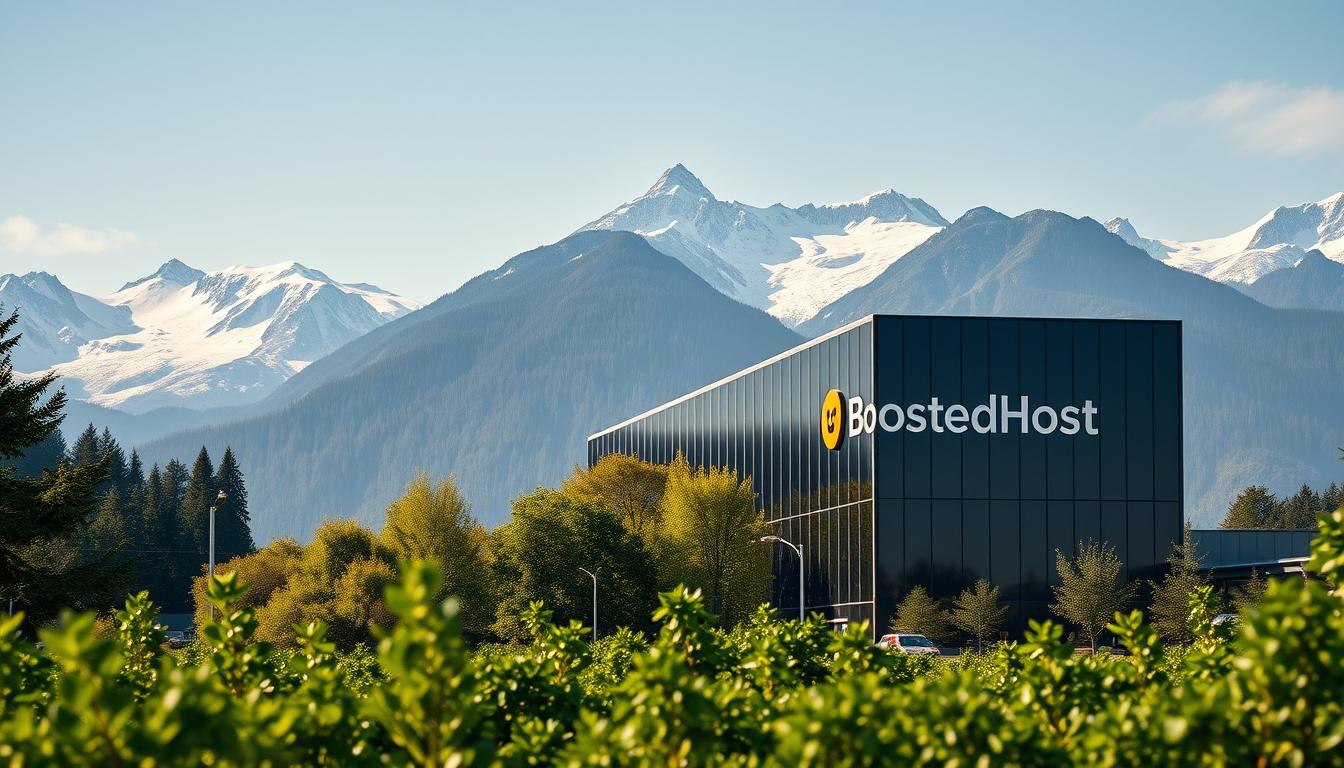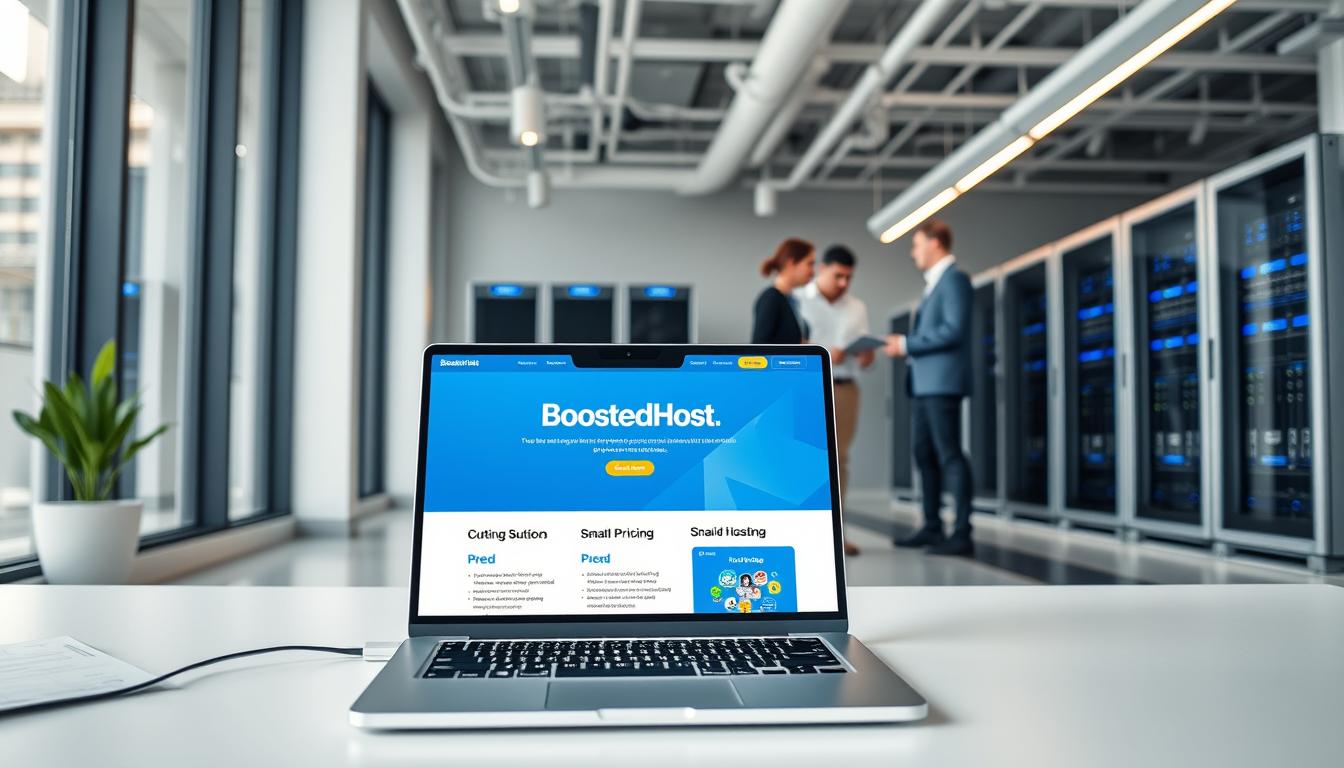We know the sleepless nights. Picking the right hosting plan can feel like a gamble when your business depends on a fast, reliable website. We’ve sat in that chair with you. We want clarity and results — not hidden fees or surprises.
This comparison cuts the fluff. We test real-world performance — LiteSpeed with LSCache, HTTP/3, free SSL, daily backups, built-in malware protection, global CDN — against an NVMe-backed challenger with Cloudflare and guided onboarding. Our focus: speed, uptime, and honest pricing.
We’ll show why sub-200ms TTFB and 99.99% uptime matter for conversions. We’ll also cover support speed, multi-language onboarding, and which provider fits small businesses, agencies, or global brands.
Key Takeaways
- We prioritize outcomes: faster sites and cleaner billing.
- LiteSpeed + LSCache and HTTP/3 deliver real performance gains.
- One provider shines for speed and uptime; the other excels in onboarding and NVMe storage.
- Both offer essential features like free SSL and CDN support.
- Choose by needs: speed-first brands and agencies vs guided small-business starters.
Executive Summary: Which Hosting Provider Wins in 2025?
Choosing a hosting provider in 2025 comes down to two things: measurable performance and straightforward pricing.
We give the edge to one provider for global speed—sub-200ms TTFB and an average 99.99% uptime. That combination delivers snappier pages and fewer incidents for your website. The same stack includes daily backups, active malware protection, free SSL, an AI builder (Orbit), and 24/7 expert support that resolves most requests in minutes.
The alternative stands out for guided onboarding, an eco-friendly stance, NVMe storage and Cloudflare CDN integration. It guarantees 99.9% uptime, a free domain and SSL on shared plans, free migrations, and a 30-minute onboarding session. Entry plans start at $2.95/month with 50GB NVMe storage—handy for first-time site owners and small business users.

- Edge for speed: sub-200ms global TTFB and 99.99% uptime — better for busy sites and growth.
- Clear pricing: transparent billing and fewer surprise renewal fees across hosting services.
- Onboarding & help: multilingual assistance and guided setup make the other provider ideal for beginners.
How We Tested: Real-World Benchmarks, Tools, and Data Sources
We ran hands-on tests across multiple regions to mirror real user traffic patterns. Our goal was simple: produce reliable, repeatable data that buyers can trust.
Test stack, regions, and caching parity
We deployed identical demo sites on matched entry and mid-tier hosting plans. Media size, theme, and plugin count were normalized so the footprint matched a typical small business site.

- LSCache on LiteSpeed for one stack; equivalent page/object caching with Cloudflare on the other.
- Regions: primary focus on U.S. visitors with additional checks from Europe and Asia.
- We logged response headers, incidents, and server behavior under stress.
Core metrics: TTFB, uptime, load time, throughput
We measured TTFB, full-page load (LCP proxy), uptime, and throughput under concurrent users. Tests targeted real-world concurrency to reveal bottlenecks in servers and CDN routing.
Independent data notes that one provider uses NVMe storage and Cloudflare CDN and guarantees 99.9% uptime, with strong support and onboarding responsiveness. We included those details in our analysis.
- Tools: synthetic RUM, load testers, and uptime monitors.
- Focus: reproducible metrics and actionable performance insights.
BoostedHost vs HostPapa: Key Differences at a Glance
Here’s a crisp snapshot of how these two hosting options differ where it matters most.
Where one provider pulls ahead:
- Speed: LiteSpeed + LSCache + HTTP/3 delivers consistent sub-200ms TTFB for global visitors.
- Uptime: An average 99.99% uptime reduces incidents and keeps the website live for customers.
- Pricing: Transparent plans with essentials included — no surprise renewal fees.
- AI tooling: Orbit builds a professional site in under five minutes for quick launches.
- Support: 24/7 expert support that resolves most tickets in minutes.
- Fast NVMe storage paired with free Cloudflare CDN for easy speed gains.
- 30-minute one-on-one onboarding and multilingual help—great for non-technical teams.
- Eco-friendly practices, a free domain and SSL on shared plans, and a 99.9% uptime guarantee.
Bottom line: Choose based on priorities — pure performance, uptime, and clear pricing for growth-focused sites; or guided setup, sustainability, and NVMe-powered simplicity for first-time owners.
Speed & Performance Benchmarks: LiteSpeed vs NVMe + CDN
Speed wins users — and real-world numbers show which stack keeps pages snappy under pressure.
Global TTFB: sub-200ms vs typical shared averages
We measured first-byte times across regions. One provider delivered a sub-200ms TTFB consistently. That cut initial wait and helped Core Web Vitals.
Page load under traffic: caching, HTTP/3, and CDN impact
Native LSCache plus HTTP/3 reduced CPU spikes and sped dynamic pages. NVMe storage with Cloudflare improved static asset delivery for global websites.
Server software and web stack
The event-driven LiteSpeed stack lowered overhead compared with many Apache/Nginx setups. That translates to fewer slow requests during peaks.
Resource allocation and concurrency
Under higher concurrency, one host kept steadier throughput and lower median latency. Proper object/page caching and tuned CDN settings preserved bandwidth and resources.
| Metric | LiteSpeed Stack | NVMe + Cloudflare |
|---|---|---|
| TTFB (global median) | <200ms | ~200–350ms |
| Caching | LSCache (native) | Cloudflare edge caching |
| Concurrency handling | Steady throughput, lower latency | Fast static delivery, variable dynamic speed |
| Bandwidth impact | Efficient compression, lower egress | Edge offload reduces origin hits |
Bottom line: For raw speed and consistent performance at scale, the LiteSpeed approach led in our tests. NVMe plus CDN remains a strong choice for global websites that need fast static delivery.
Uptime and Reliability: 99.99% vs 99.9% Guarantees
Uptime defines trust — your site can’t sell if it’s offline during prime times. We track real availability and compare guarantees to real-world averages.
Availability: An average 99.99% uptime cuts downtime to minutes per year versus a 99.9% guarantee. That difference reduces lost sales and support times for customers.
SLA and credits: We review how each provider applies credits when thresholds fail. Clear SLAs mean expectations match reality and billing remains fair.
Monitoring & response: Continuous checks and alerting shorten mean time to resolution. Quick support resolves most tickets in minutes, which keeps performance steady.
Redundancy & failover: RAID-protected storage tiers, failover paths, and resilient network design lower escalation rates during incidents.
Change management: Transparent maintenance windows and timely notices improve perceived reliability and help site managers plan downtime.
| Topic | 99.99% Average | 99.9% Guarantee |
|---|---|---|
| Annual downtime | ~5 minutes | ~8 hours |
| Monitoring | Proactive 24/7 checks | Standard server monitoring |
| Incident response | Most tickets resolved in minutes | Fast, variable SLAs |
| Failover & storage | Multi-path failover, RAID | Redundancy with scheduled failovers |
Data Center Locations and Latency for the United States
Latency to U.S. users often hinges on where the data center sits and how traffic is routed. Proximity reduces first-byte time and frees up faster page rendering for American visitors.
Global coverage and U.S. impact
Multiple regions matter. Having data centers in Switzerland, the USA, Europe, and Asia cuts round-trip time for global audiences and helps maintain consistent performance for a website targeting the U.S.
CDN points of presence and routing
Cloudflare PoPs used by the Canadian-based provider add nearby cache points for U.S. metros. That improves delivery of static assets and lowers perceived load time for a web page.
- Choose a nearby data center to improve first-byte speed for your website.
- Multi-region servers plus a global CDN help international visitors see consistent speeds.
- Proximity-based routing and edge caching reduce origin hits and speed domain asset delivery.
- Test pings and synthetic runs from key U.S. cities before final deployment.
Practical tip: Run real-world checks from major American metros—New York, Chicago, Dallas, Los Angeles—so you pick the provider and location that give the best web experience for your audience.
Shared Hosting Plans and Web Hosting Features Compared
Not all shared hosting plans are built the same; features and pricing change the value you get.
We compare tiers on storage, bandwidth, email limits, and domain inclusions so you can pick the right plan for your website.
Plan tiers, storage, bandwidth, and domains
HostPapa offers NVMe-backed tiers: Essentials at $2.95/mo (2 sites, 50GB, 10 email), Growth $6.95/mo (10 sites, 100GB, 100 email), Premium $6.95/mo (unlimited sites, 200GB), and Elite $14.95/mo (unmetered NVMe). Each plan includes a free domain and builder.
Included essentials: SSL, backups, email, migrations
Our recommended host bakes in free SSL, daily backups, malware protection, and a global CDN at the shared level. That reduces add-ons and keeps total cost predictable.
- Storage & bandwidth: NVMe storage on one side; efficient caching and CDN on the other.
- Email & domain: Generous email quotas and a free domain on entry tiers simplify setup.
- Migrations: Fast, expert migrations cut time-to-launch and reduce risk.
Bottom line: If you want transparent pricing and an all-included stack, check our shared hosting plans for predictable TCO. If free domain and a site builder matter most, the NVMe tiers deliver solid value.
Managed WordPress Hosting: Speed, Security, and Staging
Managed WordPress plans must balance raw speed with safe update workflows—neither can be an afterthought. We look at caching, PHP tuning, backups, and staging so teams ship with confidence. This influences user experience and conversion on every website.
WordPress optimization: LSCache, PHP versions, auto updates
LiteSpeed + LSCache speeds dynamic pages and lowers server load. HTTP/3 and tuned PHP versions reduce request time and memory usage.
Auto updates plus daily backups protect the site from plugin vulnerabilities without slowing performance.
WooCommerce performance and checkout speed
Low TTFB and smart object caching kept cart and checkout responsive during bursts in our tests. Fast checkouts mean fewer abandoned orders.
- Daily backups & security: Continuous snapshots and malware checks simplify restores.
- NVMe + Cloudflare: Fast static delivery and guided onboarding help migrate websites smoothly.
- Staging & rollback: One-click staging plus easy rollbacks let teams test changes safely.
Bottom line: For high-performance WordPress and WooCommerce sites, the right stack and workflows deliver both speed and operational confidence.
AI Website Builder Showdown: Orbit vs HostPapa’s Builder
AI builders now cut setup time from days to minutes, changing how teams launch sites. We tested both approaches for speed, control, and SEO readiness.
Orbit: build a professional site in under 5 minutes
Orbit uses AI to generate a polished site fast. It creates content, layout, and SEO tags in one flow. That makes it ideal for MVPs and landing pages.
Template quality, customization depth, and SEO tooling
We compared templates, customization, and SEO controls. Orbit speeds initial builds while keeping on-brand options. HostPapa’s drag-and-drop builder offers deeper manual tweaks and ecommerce features for beginners.
- Quick launch: Orbit generates a professional site in minutes—great for time-sensitive campaigns.
- Customization: Templates are editable; teams can refine design after launch.
- SEO & delivery: Both builders include SEO tools and integrate with their hosting and CDN for fast first paint.
- Workflow: AI-assisted flows speed iterations and export options help design sprints.
Try the Orbit AI website builder to see how fast a campaign-ready site can go live: Orbit AI website builder.
Security Features: Malware Protection, DDoS, and SSL
Protecting your site starts with automated defenses and a repeatable patch schedule. We focus on practical controls that keep downtime low and recovery fast.
Always-on scanning and patch cadence
Always-on malware protection scans files and flags anomalies before they spread. Regular patching reduces attack windows and keeps core services current.
Free SSL, WAF options, and brute-force hardening
Free SSL certificates are standard on both providers. We also test WAF rules, rate limiting, and brute-force mitigation to stop credential attacks early.
DDoS layers and uptime impact
ddos protection sits at the edge to absorb volumetric traffic and protect critical pages. That preserves uptime and reduces emergency support calls.
- Managed security: automated scans, patch management, and clear recovery paths speed restores.
- WAF & hardening: SQL/XSS rules, IP rate limits, and login throttling block common threats.
- Operational support: rapid triage and reporting keep incidents small and predictable.
Bottom line: One host emphasizes always-on malware, free SSL, and proactive patching by default. The other includes Let’s Encrypt, Patchman, monitoring, and DDoS edge protection—both strengthen hosting choices when paired with solid management and quick support.
Daily Backups and Restore Policies
Reliable backups save sites—and reputations. We evaluate how each host handles backup frequency, retention windows, and the speed of point-in-time restores so you can recover from bad updates, hacks, or operator error fast.
Backup frequency, retention, and point-in-time restores
Daily backups are included with our recommended hosting plan. Backups run every 24 hours and keep sequential snapshots so you can pick a recovery point within recent days.
Point-in-time restores let you roll back files and databases to a specific snapshot. That reduces data loss after failed updates or plugin conflicts. Restores are one-click and support file/database granularity.
What’s included vs paid add-ons at renewal
Included: daily image backups, clear retention windows, and point-in-time recovery tools that don’t eat into your management workflows.
Plan-dependent: the alternative may require higher-tier plans or a paid add-on for automated backups. That can add recurring costs at renewal and affect available storage and resources.
| Feature | Included by Default | Notes |
|---|---|---|
| Backup frequency | Daily | 24-hour snapshots with sequential history |
| Retention | Clear retention window (days) | Point-in-time options vary by plan |
| Restore granularity | Files & databases | One-click or selective restores |
| Impact on storage | Counts toward storage quota | Higher retention may require more storage resources |
| Email restores | Separate restore path | Email content may need dedicated backup or add-on |
Practical advice: verify backup retention and restore limits before you commit. Check whether email and database restores are bundled or billed separately. Good backup management reduces risk and lowers recovery time for your website and email.
Developer Stack and Advanced Hosting Options
Developers need predictable runtimes, CLI tools, and staging to ship reliable web apps fast. We review the developer stack and how real teams scale code, sites, and stores.
Support for PHP, Node.js, Python, and Git workflows
We support modern runtimes: PHP for WordPress and WooCommerce, Node.js for headless apps, and Python for custom services.
Git-based deploys and SSH/CLI access let teams automate builds and keep releases predictable. That matters for continuous delivery and rollback safety.
CLI access, staging, and dedicated resources
Staging environments mirror production so you test changes without impacting users. Agencies can spin up isolated stacks for each client.
For compute-heavy apps we offer easy scaling and options for dedicated resources to keep performance steady under load.
- Key features: runtime support, Git workflows, SSH CLI, staging sites, and scalable server resources.
- HostPapa provides cPanel with 400+ apps and VPS tiers for teams that want more control.
“Predictable environments speed launches and reduce firefighting.”
Content management systems benefit from fast I/O and native caching. That keeps WooCommerce carts and CMS dashboards responsive.
Bottom line: This company gives developers the tools to build, test, and scale — whether you’re a solo dev or an agency running multiple sites on a reliable hosting stack.
Pricing Transparency and Total Cost of Ownership
Understanding true long-term cost matters more than a low sticker price. We break down what you pay up front and what you’ll actually spend over 12–36 months. This helps business owners plan without surprises.
Intro pricing vs renewal rates: no hidden fees
One company keeps pricing simple. SSL, daily backups, malware protection, and a CDN are included in the plan. That removes checkout upsells and makes monthly forecasts reliable.
What’s included by default vs common upsells
By contrast, some providers show low intro rates but add paid backups, advanced security, or priority support at checkout or renewal. Over time those extras raise the real cost.
Value for individuals, small businesses, and agencies
For individuals and startups, bundled essentials limit surprise bills and keep budgets predictable.
For agencies, included services cut overhead per client and simplify rollouts.
| Customer | 12-month TCO highlight | Notes |
|---|---|---|
| Individual | Predictable monthly cost | Minimal add-ons needed |
| Small business | Lower renewal surprises | Free domain/builder may matter |
| Agency | Bundled essentials reduce per-site cost | Scales with client count |
Bottom line: Transparent billing and strong inclusions usually beat low introductory prices that pressure you into upgrades later.
Customer Support and Response Times
Fast, clear support shortens outages and keeps your site earning during critical hours. We value response speed and first-contact resolution when judging a hosting plan.
24/7 expert support that resolves most requests in minutes
Our recommended company offers 24/7 expert help that closes most tickets in minutes. Live chat, phone, and email channels are staffed by engineers who can triage incidents quickly.
First-contact resolution matters — it saves time and avoids escalation. Their live chat often solves common site issues without a ticket backlog.
Onboarding session and multilingual help
The other provider stands out for new users. They include a 30-minute onboarding session and multilingual agents to guide set up.
Phone, live chat, and a deep knowledge base reduce friction for global teams. That makes initial launches smoother for non-technical site owners.
“Proactive updates and clear escalation paths build trust during incidents.”
- First-contact wins: expert live chat support shortens mean time to repair.
- Onboarding: a guided 30-minute call helps teams launch faster.
- We check SLAs, peak-hour wait times, and escalation paths when we score support.
- Documentation depth matters — a solid knowledge base speeds routine fixes.
- Proactive incident communication reduces uncertainty for customers.
Who Each Provider Is Best For
Different teams need different tools — here’s who should pick which provider.
BoostedHost: speed-first sites, global audiences, agencies
Choose this provider if your business demands the fastest loads and global PoP coverage. It targets brands and agencies that measure conversions by milliseconds.
Agencies benefit from included backups, security, and developer tooling. That reduces per-client overhead and the need for extra paid services.
Ideal for: high-traffic websites, multi-region audiences, and teams that tune performance in-house.
HostPapa: small business starters valuing onboarding and green hosting
Pick this company if you’re a small business owner who wants guided setup and eco-friendly infrastructure.
The plan includes migrations, an easy builder, and a 30-minute onboarding session. That speeds time-to-launch for owners who prefer hands-on help.
Ideal for: new websites, budget-conscious owners, and teams prioritizing sustainability and simple workflows.
- When to pick speed-first hosting: you have complex sites, international visitors, or an agency model that needs fast TTFB and tight tooling.
- When to pick guided hosting: you want migration help, a site builder, and clear onboarding for non-technical owners.
“Both providers scale — choose based on your operating style: DIY speed or guided onboarding.”
Migration Experience and Time-to-Launch
Switching hosts should feel surgical — fast, safe, and invisible to users. We prioritize migrations that keep downtime to a minimum and preserve email flow.
Fast expert migrations: our migration team moves files, databases, email accounts, and domain DNS records. Most sites go live with minimal interruption.
- Orbit accelerates launch: spin up a professional site, connect a domain, and publish content in minutes.
- Free migration and a 30-minute onboarding call reduce setup friction for new customers.
- Daily backups protect the cutover window so restores are quick if needed.
Clean go-live checklist: adjust TTL, verify email routing, issue SSL, and enable CDN caching. Those steps save time and resources during the move.
| Task | Who handles it | Typical time |
|---|---|---|
| Files & DB | Migration team | 30–90 minutes |
| DNS / domain cutover | Support + customer | TTL-dependent, often |
| Email routing | Engineers | Validated in hours |
Our advice: take a backup snapshot, lower TTL before the move, and keep support contacts handy. That combo makes hosting migrations predictable and fast.
Conclusion
We make this comparison practical and decisive for U.S. businesses. One provider leads on raw speed, uptime, and billing clarity. The other shines for onboarding, NVMe storage, and Cloudflare integration for new site owners.
Our recommendation: choose the speed-first option if sub-200ms TTFB, 99.99% uptime, included security, daily backups, and rapid support matter most. That choice improves conversions and reduces surprise costs tied to add-ons.
If guided setup and an eco-friendly entry path matter more, HostPapa is a smart pick. It offers NVMe, a familiar builder, free domain/SSL, and a 30-minute onboarding call.
Match your goals to the right hosting plan and deploy the website with the stack that fits your long-term needs.
FAQ
Which provider offers better speed and global performance?
We found the speed leader focuses on a LiteSpeed-optimized stack with aggressive caching and global CDN points-of-presence. That setup yields lower TTFB and faster page loads for international visitors. The other provider uses NVMe storage and Cloudflare integration, which delivers strong results for regional sites. Choose the LiteSpeed stack for raw PHP/WordPress speed and NVMe+CDN for consistent global caching.
How reliable are uptime guarantees and what do SLAs actually cover?
One company publishes a 99.99% SLA and includes credits for downtime incidents. The other commonly advertises 99.9% with standard credit rules. We recommend checking the fine print for maintenance windows, scheduled updates, and exclusion clauses. Also confirm monitoring, redundancy, and failover procedures before committing.
What do shared hosting plans include by default?
Most shared plans include free SSL, daily or weekly backups, email hosting, basic site migrations, and control-panel access. Higher tiers add NVMe/SSD storage, more CPU/RAM, and priority support. Watch for limits on databases, concurrent processes, and inode counts that affect busy WordPress or WooCommerce stores.
Is managed WordPress hosting worth the extra cost?
Yes—if you value speed, security, and hands-off maintenance. Managed tiers include optimized PHP versions, LSCache or equivalent, automated updates, staging environments, and WooCommerce optimizations. These features reduce downtime risk and speed up development cycles for agencies and businesses.
How smooth is the migration process between providers?
Migration quality varies. One provider offers free, white-glove migrations and quick transfers with minimal downtime. The other provides a guided migration tool and optional paid migration support. Always backup before migrating and test the site on staging to validate DNS and SSL after the move.
What security layers should I expect from a reputable host?
Look for free SSL, a web application firewall (WAF), malware scanning, brute-force hardening, and DDoS mitigation. Daily scanning and timely patching matter. Some hosts add enterprise WAF tiers, two-factor login, and IP-rate limiting for high-risk sites.
Do these hosts support developer workflows like Git, SSH, and staging?
Yes—top-tier plans include SSH/CLI access, Git deployment, staging environments, and support for PHP, Node.js, and Python. Agencies should verify node process support, cron job limits, and the ability to request dedicated resources or isolated containers for higher concurrency.
How do pricing and renewals compare?
Introductory prices often look attractive but renew at higher rates. One provider emphasizes pricing transparency with fewer checkout upsells, while the other uses promotional rates and add-on upsells. Calculate total cost of ownership: renewal fees, backups, email limits, and premium support.
Which option is better for small businesses concerned about support and onboarding?
Hosts that include onboarding sessions, multilingual support, and proactive site checks are best for small businesses. If you need guided setup and greener hosting commitments, prioritize the provider with dedicated onboarding and local-language helpdesk availability.
Are backups included and how fast can I restore?
Many plans include daily backups with a limited retention window; premium plans extend retention and add point-in-time restores. Restore times vary—small sites restore in minutes, larger databases can take longer. Confirm retention length and whether restores are self-service or require support intervention.
How do CDN and caching options affect real-world performance?
A global CDN plus HTTP/3 and edge caching reduce latency for distant visitors. Server-side caching (LSCache, Redis) cuts backend load. Combined, they maintain fast page loads under traffic spikes. Verify that CDN integration is included or available as a supported add-on.
Will my WooCommerce store handle checkout spikes on shared hosting?
WooCommerce requires optimized caching, PHP-FPM tuning, and enough database I/O. Managed WordPress plans with WooCommerce tuning perform best. For high-traffic stores, consider higher-tier shared plans or a VPS/dedicated option with guaranteed resources.
What email and domain services are bundled with hosting plans?
Common bundles include basic email hosting, one-click domain registration, and subdomain management. Paid upgrades may offer professional email suites, higher mailbox quotas, and advanced spam filtering. Confirm mailbox sizes and SMTP limits before relying on hosted email for business.
How is customer support measured—response time and quality?
We measure support by first-response times, resolution time, and technical depth. Leading providers offer 24/7 live chat, ticketing, and phone support with fast resolution for most issues. Check realtime reviews and test support for account, migration, and performance questions.
Which hosting choice is best for agencies and resellers?
Agencies need scalability, white-label options, staging, and bulk site management tools. Plans that provide dedicated resources, account hierarchies, and migration support suit agencies. Evaluate reseller-friendly billing, API access, and backup/export capabilities.




